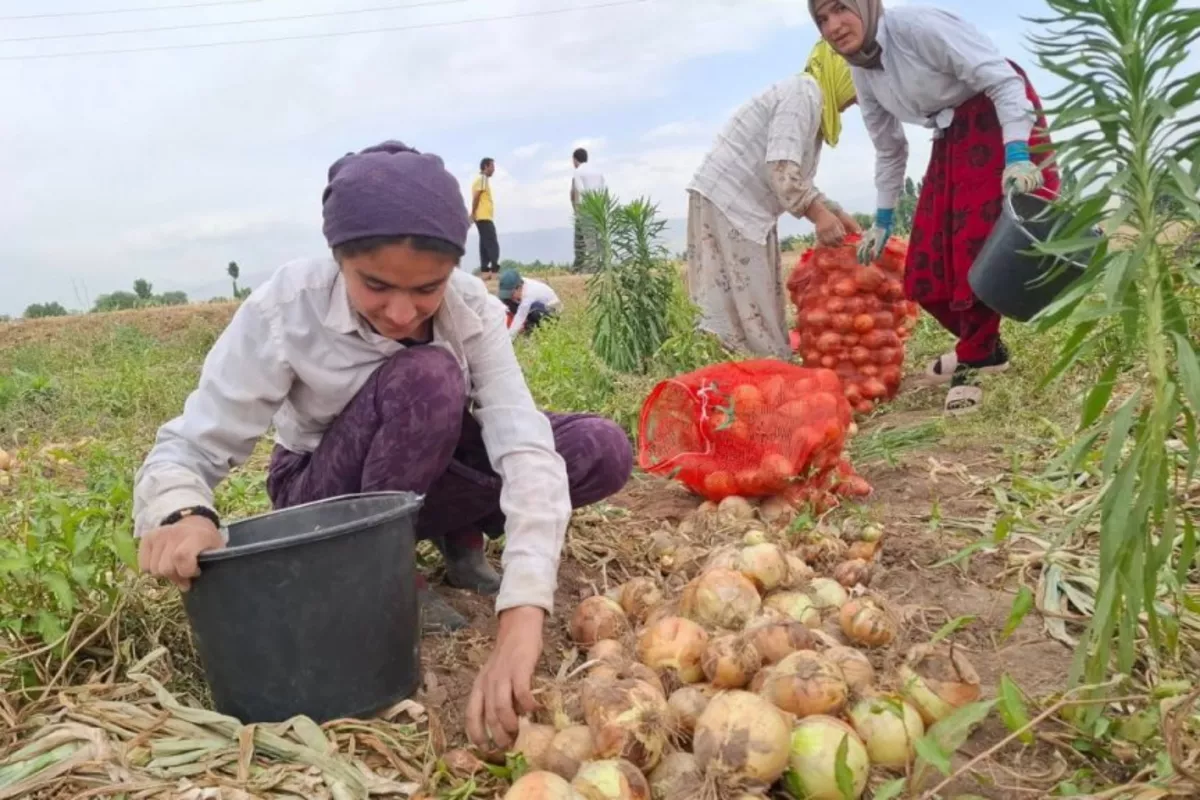
photo: Asia Plus
Tajikistan has reported a sharp decline in onion production in the first eight months of 2025, with total output falling to just over 500,000 tons - a 27.3 per cent drop compared to the same period last year.
The decline has impacted nearly all regions of the country, The Caspian Post informs via Tajik media.
The exception was Sughd province, where output rose 16.3 per cent to 123,000 tons. In contrast, production in the Gorno-Badakhshan Autonomous Region (GBAO) fell 10.1 per cent, totaling just 242 tons, while the Hisor Valley - districts under central administration - recorded a 20.1 per cent decrease to 66,000 tons.
The most severe decline occurred in Khatlon province, the country’s largest onion-producing region, where production plummeted 37.7 per cent to 311,000 tons.
Drought and Economic Pressures Turn Onions into a Risky Crop
Agricultural experts and farmers have pointed to a combination of climate-related challenges and economic constraints behind the decline. Prolonged drought and water shortages, particularly in Khatlon, severely impacted harvests. Additionally, many farmers opted to scale back onion cultivation due to low profitability in previous seasons, along with rising costs of seeds, fertilizers, and fuel.
Further compounding the crisis were plant diseases, pest infestations, and limited access to pest control resources. The lack of modern storage and processing infrastructure also contributed to post-harvest losses, adding pressure to an already struggling sector.
Onion Prices Surge on Local Markets
With supply tightening, consumer prices have risen sharply. In September 2025, the average retail price for onions reached 3.00 somonis per kilogram, a 23.5 per cent increase from 2.60 somonis in September 2024. The price hike has been fueled by market shortages, seasonal fluctuations, and increased transportation and fuel costs, which have pushed up prices across the supply chain.
Onion Exports Collapse as Domestic Demand Takes Priority
Tajikistan’s onion exports have suffered a steep drop. From January to August 2025, only 4,700 tons were exported, compared to over 29,000 tons during the same period last year - a nearly 84 per cent decrease. Revenue from exports fell to just $3.2 million.
Analysts attribute the collapse to farmers prioritizing the domestic market, where prices are more attractive and demand remains strong. At the same time, regional competition from countries like Uzbekistan and Kazakhstan - which offer larger volumes at lower prices - has eroded Tajikistan’s share of export markets. Trade barriers and logistical challenges have also hindered international shipments.
Calls for Urgent Government Intervention
The current crisis has highlighted deep-seated vulnerabilities in Tajikistan’s agricultural sector. Experts are urging the government to provide targeted support to farmers through subsidies, low-interest loans, and investment in modern irrigation systems, storage facilities, and processing technologies.
Without strategic intervention and a push to diversify export markets, the country remains highly exposed to climate risks, market volatility, and rising food insecurity.
Share on social media